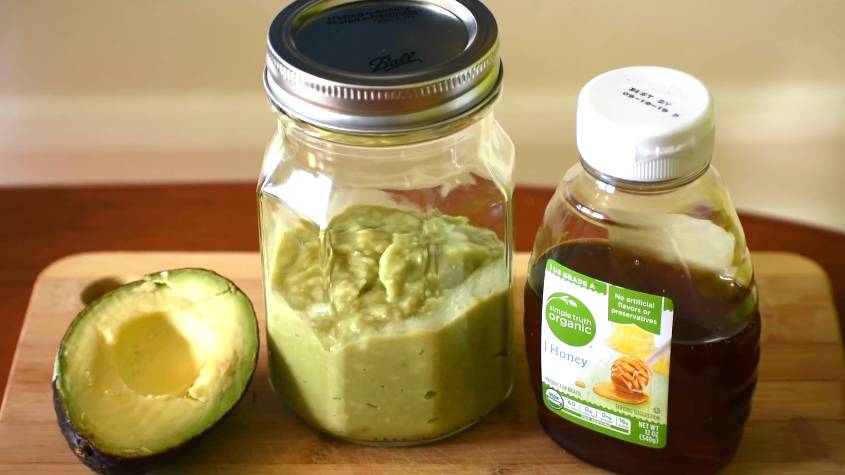Welcome to the ultimate guide on achieving optimal daily moisturization for your natural hair. Unveiling the secrets to maintaining luscious and well-nourished curls, this comprehensive blog is your go-to resource for elevating your hair care routine.
We understand the unique needs of natural hair and are committed to providing you with expert insights and actionable steps. Say goodbye to dry and brittle hair – embark on a journey with us to master the art of daily moisturization, ensuring your natural locks radiate health and vitality every day.
The foundation of an effective daily moisturization routine lies in understanding the diverse textures of natural hair. Whether you have Type 3 curls or Type 4 coils, tailoring your approach to your hair's specific needs is crucial for success.

Type 3 Hair: Defined Curls
Type 3 hair, characterized by well-defined curls, thrives on hydration. To maintain the bounce and vibrancy of these curls, incorporate leave-in conditioners into your routine. Opt for products containing essential oils, ensuring that your curls receive the nourishment they deserve.
Type 4 Hair: Coils And Kinks
Type 4 hair, with its tight coils and kinks, demands extra attention. Choose rich, creamy moisturizers that can penetrate the hair shaft, providing lasting hydration. Ingredients like shea butter and argan oil work wonders for Type 4 hair, promoting softness and manageability.
Why Does Natural Hair Get So Dry?
Understanding the factors behind the persistent dryness of natural hair is paramount in developing an effective moisturization strategy. Several elements contribute to the dryness of natural hair, often making it a common concern among individuals with textured hair.
Firstly, the natural curl pattern of textured hair makes it challenging for the natural oils produced by the scalp to travel down the hair shaft. This results in uneven distribution of sebum, leaving the ends of the hair particularly prone to dryness. Additionally, the coiled structure of textured hair makes it more susceptible to breakage and moisture loss, as the twists and turns create areas where moisture can easily escape.
External factors, such as weather conditions and environmental pollutants, further exacerbate the dryness issue. Harsh weather, particularly low humidity, can strip natural hair of its moisture content, leading to increased dryness and brittleness. Exposure to pollutants, styling products, and heat treatments without proper protective measures can also contribute to the depletion of moisture in natural hair.
Using of traditional shampoos with harsh sulfates can strip away the natural oils that textured hair desperately needs. This disruption of the scalp's oil balance can result in a perpetual cycle of dryness, making it essential to choose sulfate-free cleansing options.
Understanding the unique challenges that natural hair faces in retaining moisture is the first step in addressing and overcoming the issue of dryness. Implementing a targeted and consistent moisturization routine, as outlined in our guide, can help replenish and maintain the optimal moisture levels required for healthy, vibrant natural hair.
Crafting The Perfect Daily Moisturization Routine
Achieving optimal daily moisturization is a blend of using high-quality products and maintaining a consistent routine. Let's break down the steps for an enviable natural hair care routine:

Step 1: Gentle Cleansing
Initiate your routine with a sulfate-free shampoo. This ensures a thorough cleanse without stripping away the natural oils essential for hair health. Clean hair is better equipped to absorb moisture, setting the stage for an effective routine.
Step 2: Deep Conditioning
Invest in a nourishing deep conditioner that caters to your hair type. This step is pivotal for replenishing moisture and fortifying your strands. Ensure the product is designed to meet the unique needs of your hair, providing the necessary nutrients for a healthy mane.
Step 3: Leave-In Conditioning
The next step involves using a leave-in conditioner to lock in moisture. Look for products with ingredients like shea butter and argan oil, as they create a protective barrier against environmental stressors. This step is crucial for maintaining moisture throughout the day.
Step 4: Moisturizing Creams And Oils
Choose a high-quality moisturizing cream or oil to seal in the hydration. Products enriched with natural ingredients such as aloe vera or jojoba oil contribute to the overall health of your hair. Applying these products evenly ensures each strand benefits from the moisturizing properties.
Step 5: Protective Styling
Consider incorporating protective styling into your routine. Styles like braids or twists not only look chic but also minimize exposure to environmental stressors. This helps retain moisture and promotes the overall health of your natural hair.
DIY Moisturizing Treatments
For those who prefer a hands-on approach, here's a simple yet effective DIY moisturizing treatment using avocado and honey:

Avocado And Honey Hair Mask
Creating an avocado and honey hair mask is a fantastic way to moisturize and nourish natural hair. Here's a simple recipe and instructions:
Ingredients:
- 1 ripe avocado
- 2 tablespoons of honey
- 2 tablespoons of olive oil or coconut oil (optional, for extra moisture)
Instructions:
- Start by peeling and removing the pit from the ripe avocado. Cut the avocado into chunks and place them in a mixing bowl.
- Add 2 tablespoons of honey to the bowl with the avocado.
- If desired, incorporate 2 tablespoons of olive oil or coconut oil into the mixture. These oils can provide additional moisture to your hair.
- Mash the ingredients together until you achieve a smooth, consistent paste-like texture.
- Before applying the mask, dampen your hair slightly. You can apply the mask to either dry or damp hair, depending on your preference.
- Section your hair and apply the avocado and honey mixture generously, starting from the roots to the tips. Ensure thorough coverage of all your hair.
- Once your hair is fully coated, use a shower cap or plastic wrap to cover your hair and let the mask sit for about 20-30 minutes. This allows the nutrients to penetrate and moisturize your hair.
- After the allotted time, rinse the mask out of your hair thoroughly with lukewarm water. You may need to shampoo and condition as usual to remove any residue.
- Style your hair as desired.
Avocado is rich in healthy fats and vitamins that can help moisturize and strengthen hair, while honey is a natural humectant that helps retain moisture. This mask can leave your natural hair feeling soft, moisturized, and revitalized.
Remember, individual hair types may react differently to various ingredients, so it's recommended to do a patch test before applying any new hair treatment to ensure you don't have any adverse reactions.
Conclusion
Maintaining well-moisturized natural hair is an ongoing process that requires dedication and the right products. By following our expert guide, you'll not only meet but exceed the moisture needs of your natural hair. Embrace the beauty of hydrated, radiant curls every day with Us. Our commitment to providing valuable insights ensures that your natural hair journey is both enjoyable and successful.